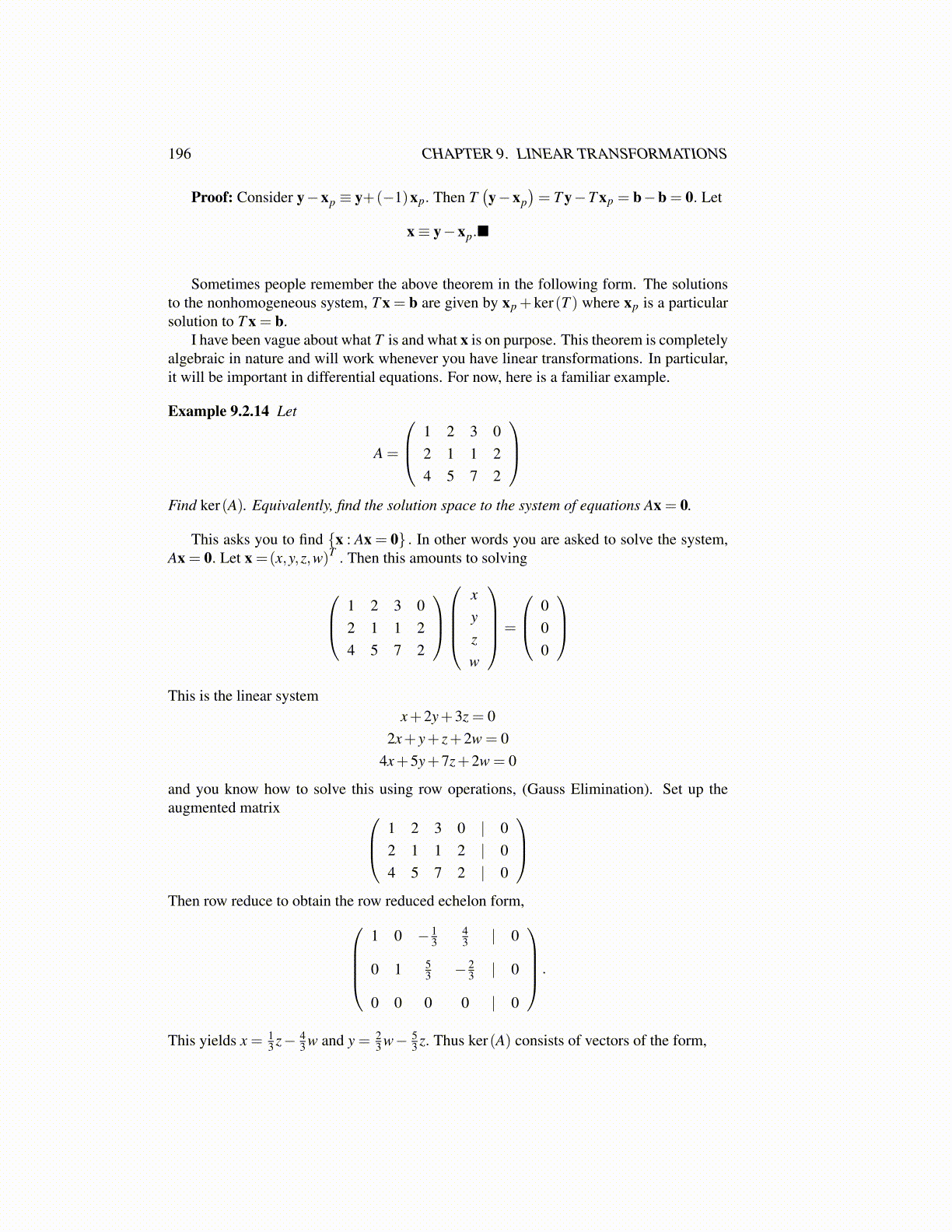
196 CHAPTER 9. LINEAR TRANSFORMATIONS
Proof: Consider y−xp ≡ y+(−1)xp. Then T(y−xp
)= T y−T xp = b−b = 0. Let
x≡ y−xp.■
Sometimes people remember the above theorem in the following form. The solutionsto the nonhomogeneous system, T x = b are given by xp +ker(T ) where xp is a particularsolution to T x = b.
I have been vague about what T is and what x is on purpose. This theorem is completelyalgebraic in nature and will work whenever you have linear transformations. In particular,it will be important in differential equations. For now, here is a familiar example.
Example 9.2.14 Let
A =
1 2 3 02 1 1 24 5 7 2
Find ker(A). Equivalently, find the solution space to the system of equations Ax = 0.
This asks you to find {x : Ax = 0} . In other words you are asked to solve the system,Ax = 0. Let x =(x,y,z,w)T . Then this amounts to solving
1 2 3 02 1 1 24 5 7 2
xyzw
=
000
This is the linear system
x+2y+3z = 02x+ y+ z+2w = 0
4x+5y+7z+2w = 0
and you know how to solve this using row operations, (Gauss Elimination). Set up theaugmented matrix 1 2 3 0 | 0
2 1 1 2 | 04 5 7 2 | 0
Then row reduce to obtain the row reduced echelon form,
1 0 − 13
43 | 0
0 1 53 − 2
3 | 0
0 0 0 0 | 0
.
This yields x = 13 z− 4
3 w and y = 23 w− 5
3 z. Thus ker(A) consists of vectors of the form,